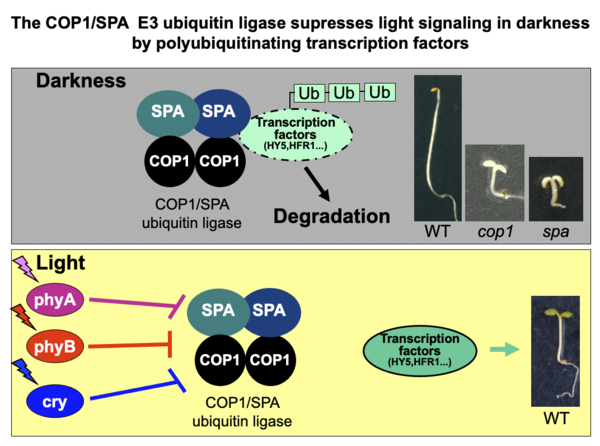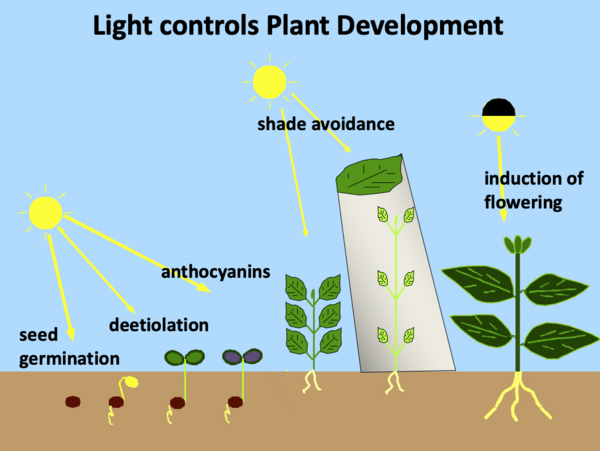Our main areas of research are:
- Protein ubiquitination in light signal transduction
- Light-controlled development of Arabidopsis
- Evolution of light signaling by studying light responses in the moss Physcomitrium patens and the charophyte alga Mesotaenium endlicherianum
- Role of light signaling genes in Arabidopsis competitiveness in an ecological setting
Sunlight is the primary source of energy for plants. Therefore, plants have evolved a variety of mechanisms to adapt growth and development to the ambient light conditions, with the aim to optimize growth and - ultimately - seed production in a competitive environment. We are interested in identifying and understanding the genes and proteins that underlie these adaptive developmental responses to light. To this end, we are - mostly - using the model species Arabidopsis thaliana and a combination of genetic, molecular and biochemical approaches.
Plants monitor the light conditions through a number of photoreceptors that initiate a signaling cascade resulting in vast changes in gene expression. Our research focuses on the proteins involved in the light signaling cascade. In particular, we analyze an E3 ubiquitin ligase (COP1/SPA complex) that controls the degradation of transcription factors. Here, we focus on the regulation of COP1 activity by SPA proteins and photoreceptors. In darkness, the COP1/SPA E3 ubiquitin ligase is active, thereby causing polyubiquitination and degradation of a number of transcription factors involved in the light response. This actively prevents a light response in darkness. When plants are exposed to light, photoreceptors bind and inactivate the COP1/SPA complex which subsequently allows transcription factors to accumulate and to initiate a light response.
We also investigate the evolution of the COP1/SPA complex. While the COP1 gene also exists in humans where it controls processes such as cell division and - possibly - tumor suppression, SPA genes are specific to the green lineage. By analyzing COP1 and SPA function in the moss Physcomitrium patens (a moss, formerly named Physcomitrella), we aim to understand how SPA genes evolved.
Light conditions initiate a large number of adaptive responses. Examples are an increased stem elongation in shady conditions, a higher number of stomata and thickening of leaves in the light, and a regulation of flowering time by day length. To understand how a common set of photoreceptors can induce such diverse responses throughout plant development, we analyze the functions of transcription factors in light signaling. Moreover, we have started to investigate how light signalling genes affect the fitness of Arabidopsis when plants are competing for light.

